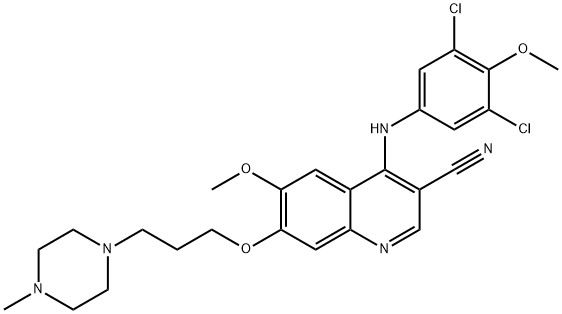3-ACETAMIDOPHENOL
Synonym(s):3′-Hydroxyacetanilide
- CAS NO.:621-42-1
- Empirical Formula: C8H9NO2
- Molecular Weight: 151.16
- MDL number: MFCD00002263
- EINECS: 210-687-0
- SAFETY DATA SHEET (SDS)
- Update Date: 2025-12-09 17:14:16

What is 3-ACETAMIDOPHENOL?
Chemical properties
off-white to tan or light grey crystals,
The Uses of 3-ACETAMIDOPHENOL
3-Acetamidophenol is the ortho-regioisomer of Acetaminophen (A161220), an over-the-counter analgesic and antipyretic agent (1,2).
Definition
ChEBI: A derivative of phenol which has an acetamido substituent located meta to the phenolic -OH group. It is a non-toxic regioisomer of paracetamol with analgesic properties, but has never been marketed as a drug.
General Description
Light gray solid.
Air & Water Reactions
Water insoluble.
Reactivity Profile
Phenols do not behave as organic alcohols, as one might guess from the presence of a hydroxyl (-OH) group in their structure. Instead, they react as weak organic acids. Phenols and cresols are much weaker as acids than common carboxylic acids (phenol has Ka = 1.3 x 10^[-10]). These materials are incompatible with strong reducing substances such as hydrides, nitrides, alkali metals, and sulfides. Flammable gas (H2) is often generated, and the heat of the reaction may ignite the gas. Heat is also generated by the acid-base reaction between phenols and bases. Phenols are sulfonated very readily (for example, by concentrated sulfuric acid at room temperature). The reactions generate heat. Phenols are also nitrated very rapidly, even by dilute nitric acid. Nitrated phenols often explode when heated. Many of them form metal salts that tend toward detonation by rather mild shock. Flammable gases are formed by the reaction of organic amides with strong reducing agents. Amides are very weak bases (weaker than water). Mixing amides with dehydrating agents such as P2O5 or SOCl2 generates the corresponding nitrile. The combustion of these compounds generates mixed oxides of nitrogen (NOx).
Fire Hazard
Flash point data for 3-ACETAMIDOPHENOL are not available. 3-ACETAMIDOPHENOL is probably combustible.
Purification Methods
Recrystallise the phenol from water. The 3,5-dinitrobenzamide complex gives orange-yellow crystals from hot H2O and has m 212o. [Beilstein 13 H 415, 13 I 132, 13 II 213, 13 III 950, 13 IV 977.]
Properties of 3-ACETAMIDOPHENOL
| Melting point: | 145-148 °C(lit.) |
| Boiling point: | 273.17°C (rough estimate) |
| Density | 1.249 |
| refractive index | 1.5810 (estimate) |
| storage temp. | Keep in dark place,Inert atmosphere,Room temperature |
| solubility | Chloroform (Slightly), DMSO (Slightly), Methanol |
| pka | 9.50±0.10(Predicted) |
| form | Crystals, Crystalline Powder or Needles |
| color | Off-white to tan or light gray |
| PH | 6-7 (H2O)(saturated solution) |
| BRN | 907998 |
| CAS DataBase Reference | 621-42-1(CAS DataBase Reference) |
| EPA Substance Registry System | 3'-Hydroxyacetanilide (621-42-1) |
Safety information for 3-ACETAMIDOPHENOL
| Signal word | Warning |
| Pictogram(s) |
 Exclamation Mark Irritant GHS07 |
| GHS Hazard Statements |
H315:Skin corrosion/irritation H319:Serious eye damage/eye irritation |
| Precautionary Statement Codes |
P264:Wash hands thoroughly after handling. P264:Wash skin thouroughly after handling. P280:Wear protective gloves/protective clothing/eye protection/face protection. P302+P352:IF ON SKIN: wash with plenty of soap and water. P305+P351+P338:IF IN EYES: Rinse cautiously with water for several minutes. Remove contact lenses, if present and easy to do. Continuerinsing. P332+P313:IF SKIN irritation occurs: Get medical advice/attention. P337+P313:IF eye irritation persists: Get medical advice/attention. |
Computed Descriptors for 3-ACETAMIDOPHENOL
New Products
Indole Methyl Resin tert-butyl 9-methoxy-3-azaspiro[5.5]undecane-3-carboxylate Boc-His(Boc)-OH 2-CTC Resin 4-Chloro-7-tosy1-7Hpyrrolo[2,3-d]pyrimidine 5,7-Dibromo-1H-indole 2,5-dichloro-N-hydroxy-4,6-dimethylpyridine-3-carboximidamide 2,2-Dimethoxy-7-azaspiro[3.5]nonane hydrochloride 4-chloromethyl-5-methyl-1,3-dioxol-2-one (DMDO-Cl) R-2-BENZYLOXY PROPIONIC ACID 1,1’-CARBONYLDIIMIDAZOLE 1,1’-CARBONYLDI (1,2-4 TRIAZOLE) N-METHYL INDAZOLE-3-CARBOXYLIC ACID 4-((2-hydroxyethyl)thio)benzoic acid 1-(TERT-BUTOXYCARBONYL)-2-PYRROLIDINONE Methyl 6-methylnicotinate 3-Pyridineacrylic acid tert-Butyl carbazate TETRAHYDRO-2H-PYRAN-3-OL 2-((4-morpholinophenylamino) (methylthio) methylene) malononitrile 3-(4-morpholinophenylamino)-5-amino-1H-pyrazole-4-carbonitrile 2,4-dihydroxybenzaldehyde 1,3-Diethyl-1,3-Diphenylurea Methyl 2-methylquinoline-6-carboxylateRelated products of tetrahydrofuran
![3-Quinolinecarbonitrile,4-chloro-6-Methoxy-7-[3-(4-Methyl-1-piperazinyl)propoxy]-](https://img.chemicalbook.in/CAS/20150408/GIF/492444-39-0.gif)







You may like
-
 621-42-1 3-Acetamido phenol 99%View Details
621-42-1 3-Acetamido phenol 99%View Details
621-42-1 -
 3-Acetamidophenol 98%View Details
3-Acetamidophenol 98%View Details
621-42-1 -
 621-42-1 3-Acetamidophenol 98%View Details
621-42-1 3-Acetamidophenol 98%View Details
621-42-1 -
 3-Acetamidophenol, 99+% CAS 621-42-1View Details
3-Acetamidophenol, 99+% CAS 621-42-1View Details
621-42-1 -
 3'-Hydroxyacetanilide CAS 621-42-1View Details
3'-Hydroxyacetanilide CAS 621-42-1View Details
621-42-1 -
 3-Acetamidophenol CAS 621-42-1View Details
3-Acetamidophenol CAS 621-42-1View Details
621-42-1 -
 Pyridine 99.5% HPLC /UV SpectroscopyView Details
Pyridine 99.5% HPLC /UV SpectroscopyView Details
110-86-1 -
 Thiourea 99% ARView Details
Thiourea 99% ARView Details
62-56-6
